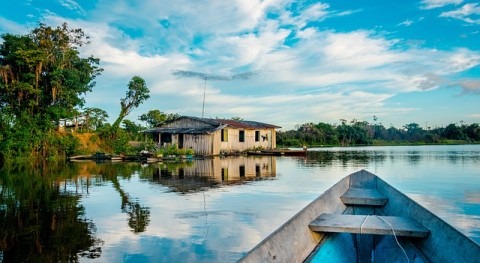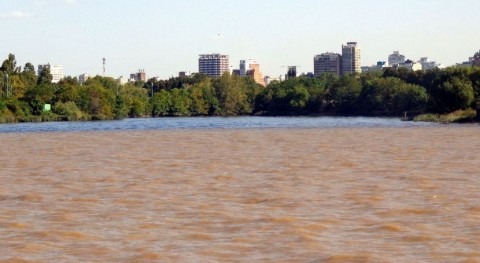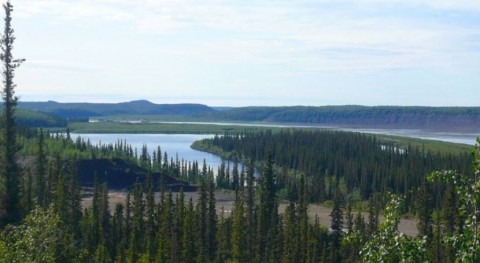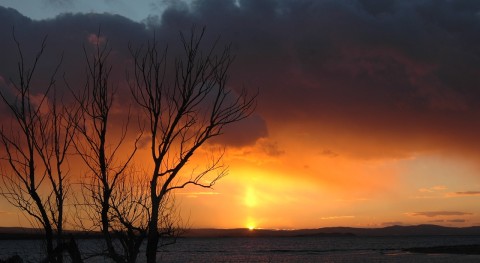What is the longest river in the US – North America?
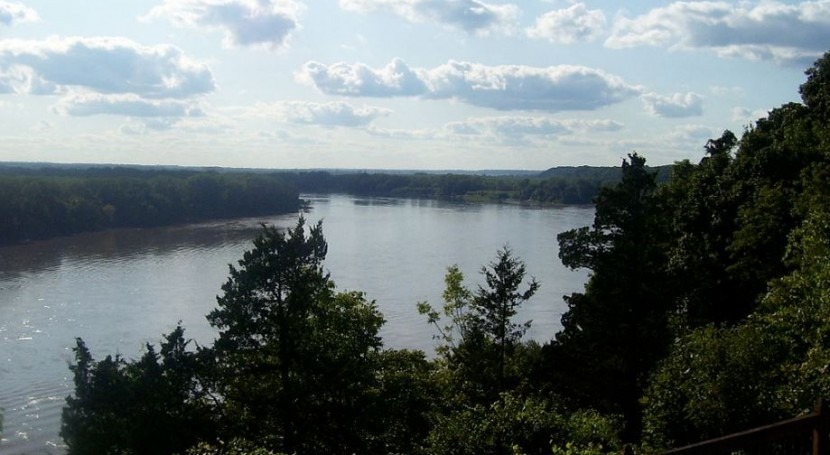
The longest river in North America formed in response to both Laurentide ice sheet glaciation and to glaciation of the Rocky Mountains.
Index
- Where Does the Missouri River Flow Through?
- What is the Missouri River's Length and How Large is Its Basin?
- History of the Missouri River
- European Exploration and Early Navigation
- 20th Century Developments: Flood Control and Hydropower
- Ecological and Environmental Importance of the Missouri River
- The Future of the Missouri River: Balancing Development and Conservation
- Final Thoughts on the Missouri River
1 . Where Does the Missouri River Flow Through?
The Missouri River flows entirely within the United States, crossing seven states on its way from its headwaters in the Rocky Mountains to its confluence with the Mississippi River. These states include:
- Montana: Where the Missouri originates in the Rocky Mountains.
- North Dakota and South Dakota: Where it passes through vast plains and agricultural lands.
- Nebraska: Where it provides vital water for irrigation.
- Iowa, Kansas, and Missouri: Where it serves as a key resource for agriculture, industry, and cities.
The river begins at the junction of three smaller rivers—the Jefferson, Madison, and Gallatin—in Montana, at an elevation of about 1,200 meters above sea level. From there, it travels southeastward, cutting through the Great Plains, before finally joining the Mississippi River just 16 kilometers north of St. Louis, Missouri. This point is a vital confluence, where the combined flow of these two rivers forms one of the most important waterways in North America, which continues southwards toward the Gulf of Mexico.
2 . What is the Missouri River's Length and How Large is Its Basin?
At 3,943 kilometers (2,341 miles) long, the Missouri River holds the title of the longest river in the United States and North America. However, when considering the Mississippi-Missouri river system as a single entity, its length extends to 7,725 kilometers (4,800 miles), making it the fourth longest river system in the world, only surpassed by the Amazon, Nile, and Yangtze rivers.
In terms of its drainage basin, the Missouri covers a massive 1,371,100 square kilometers, making it the sixth-largest river basin globally. This enormous basin stretches across parts of ten U.S. states and even extends into southern Canada, encompassing an additional 16,840 square kilometers. The Missouri River basin supports a variety of ecosystems, from alpine environments in the Rocky Mountains to temperate plains and agricultural fields in the Midwest. This diversity has made the Missouri a critical water source for irrigation, drinking water, and industry.
The river's basin also includes key tributaries such as the Platte, Kansas, and Yellowstone rivers, each contributing to the Missouri's vast reach and importance. The basin is also home to several major reservoirs, including Fort Peck Lake and Lake Sakakawea, which store water for hydroelectric power generation, irrigation, and flood control.
3 . History of the Missouri River
The Missouri River has a rich history that dates back thousands of years, long before European settlers arrived in North America. Indigenous peoples, including the Mandan, Hidatsa, and Sioux nations, thrived along its banks, using the river as a source of food, water, and transportation. For these native communities, the Missouri River was not only a physical resource but also a cultural and spiritual one, deeply integrated into their way of life.
4 . European Exploration and Early Navigation
The first recorded European exploration of the Missouri occurred in 1673 when French explorers Jacques Marquette and Louis Jolliet set out to map and navigate the river’s lower sections. Over a century later, the famed Lewis and Clark Expedition of 1804-1806 traveled the length of the Missouri River, following it from its headwaters to its confluence with the Mississippi. This exploration was instrumental in opening up the western United States for settlement and trade.
As American settlers moved westward during the 19th century, the Missouri River became a critical transportation route. The introduction of steamboats in the 1830s allowed for goods, settlers, and supplies to be transported up and down the river with relative ease. Steamboat traffic peaked in the mid-19th century but began to decline after 1858 as railroads started to replace river transport as the dominant means of moving goods across the country.
5 . 20th Century Developments: Flood Control and Hydropower
The 20th century saw major engineering developments along the Missouri River. Following several devastating floods, the U.S. Congress approved the Flood Control Act of 1944, which authorized a comprehensive development plan for the river. This included the construction of large dams and reservoirs along the river and its tributaries, designed to provide flood control, irrigation, and hydroelectric power.
Some of the most significant dams built during this period include:
- Fort Peck Dam in Montana, which created one of the largest reservoirs in the U.S.
- Garrison Dam in North Dakota, forming Lake Sakakawea, a major water storage facility.
- Oahe Dam in South Dakota, which generates hydroelectric power for millions of people in the Midwest.
These projects transformed the Missouri River into a controlled waterway, benefiting agriculture, energy production, and flood management. However, they also had significant environmental impacts, altering natural habitats and changing the flow of the river.
6 . Ecological and Environmental Importance of the Missouri River
The Missouri River plays a critical role in supporting ecosystems across the central United States. It provides habitat for a wide range of species, including many that are endangered or threatened, such as the pallid sturgeon and the piping plover. Wetlands along the Missouri River offer breeding grounds for migratory birds, while its waters support extensive fisheries.
However, human activity, including dam construction, pollution, and water extraction, has threatened the health of the Missouri River's ecosystems. The alteration of the river's natural flow has led to changes in sediment transport, impacting fish populations and degrading habitats. Efforts to restore sections of the river and protect its biodiversity are ongoing, with conservation groups and government agencies working together to balance the needs of human development with environmental sustainability.
7 . The Future of the Missouri River: Balancing Development and Conservation
As climate change, population growth, and industrial development continue to affect the Missouri River, there is a growing need for sustainable water management practices. Ensuring that the river can continue to meet the needs of agriculture, energy production, and communities while protecting its ecosystems is a significant challenge. Key areas of focus include:
- Water resource management to address competing demands for irrigation, drinking water, and industrial use.
- Flood mitigation strategies to prevent the damage caused by increasingly severe weather events.
- Ecosystem restoration projects aimed at restoring natural habitats and improving water quality.
In the coming decades, the Missouri River will remain a vital resource for the central United States, but its management will require careful planning and collaboration among states, federal agencies, and local communities.
8 . Final Thoughts on the Missouri River
The Missouri River is not just the longest river in North America; it is a vital artery for the continent, shaping its history, supporting its people, and sustaining its ecosystems. As we look to the future, it is essential that we continue to manage this invaluable resource wisely, balancing the needs of human development with the protection of the natural environments that depend on it.


